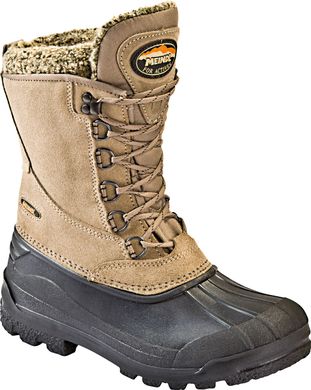proper winter clothing
In this picture you can see each day’s highest temparature from 2012-20. In 2016 it was deepest with -5°C, but was normally a few plus. This means the large herbs and grasses everywhere are very wet. So at first you need waterproof shoes. Best are (Gore- or other)Tex-shoes or leather hiking boots that are well polished. When you’re using rubber boots, make sure you’re having enough socks, so you can change every 1,5h, because the feet are sweating and then get wet and cold. This is also the case when your wearing shoes, in which the lower half is from rubber like this: 
Thick socks should be best from polyester that doesn’t hold the water or wool that isolates much longer even when wet to a certain degree.
If the temparature drops below zero space inside the shoes is crucial for warmth, so make sure your shoes are that big that all the toes can move freely, even with the thick socks.
Warmth and water-protection are the topics with gloves, too. So best are thick polyester gloves with rubber palms, but can breath on the back. They look like this

and can be bought in any hardware store.
For trousers and sweaters, the rule is that the outer shell should be windproof and the inner shells should do the isolation. These should again be from polyester or wool, best down to the underwear.
In winter you’re wearing enough to sit around, and when you work hard you’ll sweat most. That’s why thick coats doesn’t make much sense, for once you open them your wet belly will freeze and your back will go on sweating. So the “onion principle” is best where you can remove/put on one layer at a time.
In this way I never get cooled down and can spend the whole day relaxed outside.
The forestgarden is full of thorns, so think about risking your expensive (Gore)Tex-raincloth. Luckily with the thick polyester/wool cloth sweating isn’t that problematic when wearing cheap raincloth from the hardware store.

